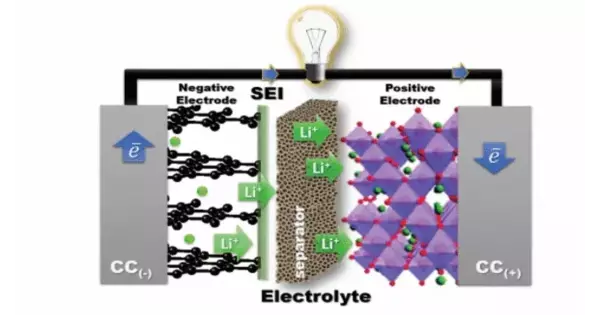Complex oxides are a class of materials that exhibit a wide range of electronic, magnetic, and optical properties. These properties make them promising candidates for a variety of applications, including powering the computers of the future. One of the key advantages of complex oxides is their ability to switch between different electronic states with extremely low energy input. This could potentially lead to the development of more energy-efficient electronic devices, including computer processors and memory devices.
Materials scientists describe how complex oxides can be used to make very energy-efficient magneto-electric spin-orbit (MESO) devices and memristive devices with reduced dimensions in two papers.
Scientists are looking for a revolution as the evolution of standard microchips comes to an end. The major challenges are designing more energy-efficient chips and devices that combine memory and logic (memristors). Materials scientists from the University of Groningen in the Netherlands describe how complex oxides can be used to create highly energy-efficient magneto-electric spin-orbit (MESO) devices and memristive devices with reduced dimensions in two papers.
The development of traditional silicon-based computers is nearing its end. Different materials and architectures are required to achieve further miniaturization and reduce energy consumption. Tamalika Banerjee, Professor of Spintronics of Functional Materials at the Zernike Institute for Advanced Materials at the University of Groningen, is investigating a variety of quantum materials in order to develop these new devices. ‘Our approach is to investigate these materials and their interfaces while keeping an eye on applications such as memory or the combination of memory and logic in mind.’
The magnetic and charge orderings are coupled in this material, so we can switch magnetism with an electric field and polarization with a magnetic field. Our approach is to investigate these materials and their interfaces while keeping an eye on applications such as memory or the combination of memory and logic in mind.
Tamalika Banerjee
More efficient
The Banerjee group previously demonstrated how to use doped strontium titanate to make memristors, which combine memory and logic. They recently published two papers on devices ‘beyond CMOS,’ the complementary metal oxide semiconductors that serve as the foundation for modern computer chips.
The magneto-electric spin-orbit (MESO) device, which could be 10 to 30 times more efficient than CMOS, is one candidate for replacement. Several materials have been researched for their suitability in the development of such a device. Job van Rijn, a Ph.D. student in the Banerjee group, is the first author of a paper published in Physical Review B in December 2022 that describes how strontium manganate (SrMnO3 or SMO for short) could be a good candidate for MESO devices. ‘It is a multiferroic material that couples spintronics and charge-based effects,’ explains van Rijn. Spintronics is based on the spin (the magnetic moment) of electrons.
Banerjee: ‘The magnetic and charge orderings are coupled in this material, so we can switch magnetism with an electric field and polarization with a magnetic field.’ And, importantly, these effects are present at temperatures close to room temperature. Van Rijn is investigating the strong coupling between the two effects. ‘We know that ferromagnetism and ferroelectricity are tuneable by straining a thin SMO film. This straining was done by growing the films on different substrates.’

Strain
Van Rijn studies how strain induces ferroelectricity in the material and how it impacts the magnetic order. He analysed the domains in the strained films and noticed that magnetic interactions are greatly dependent on the crystal structure and, in particular, on oxygen vacancies, which modify the preferred direction of the magnetic order. ‘Spin transport experiments lead us to the conclusion that the magnetic domains play an active role in the devices that are made of this material. Therefore, this study is the first step in establishing the potential use of strontium manganate for novel computing architectures.’
On 14 February, the Banerjee group published a second paper on devices ‘beyond CMOS’, in the journal Advanced Electronic Materials. PhD student Anouk Goossens is the first author of this paper on the miniaturization of memristors based on niobium-doped strontium titanate (SrTiO3 or STO). ‘The number of devices per unit surface area is important,’ says Goossens. ‘But some memristor types are difficult to downscale.’
Goossens previously demonstrated that STO could be used to create ‘logic-in-memory’ devices. Her most recent paper demonstrates that these devices can be downscaled. Miniaturization has a negative impact on memristor performance, which is a common issue. Surprisingly, using STO to make smaller memristors increases the difference between the high and low resistance ratios. ‘We studied the material using scanning transmission electron microscopy and discovered a large number of oxygen vacancies at the interface between the substrate and the device’s electrode,’ Goossens explains. ‘We noticed oxygen vacancy movement after applying an electric voltage, which is a key factor in controlling the resistance states.’
New design
The conclusion is that the improved performance is due to edge effects, which can be detrimental to normal memory. However, in STO, the increased electric field at the edges actually helps the memristor function. ‘In our case, the edge is the device,’ Goossens concludes. ‘Additionally, the exact properties depend on the amount of niobium doping, so the material can be tuned for different applications.’
















